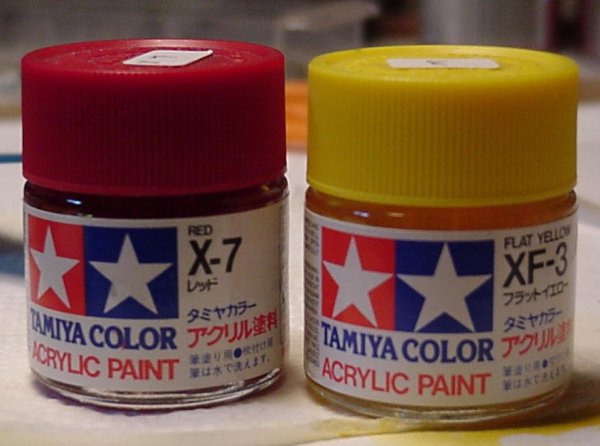|
Airbrushing Tamiya Paints |
||
|
||
|
|
|
|
|
|
 |
|
|
|
Over
the past decade or so, Iíve had the opportunity to try out a lot of different
modeling paints. I have used Floquil Railroad Colors (lacquer based), Testors
Enamels, Humbrol, the truly awful Testors original acrylic paints, Testors
Acryl, Polly Scale acrylics, Gunze acrylics, and Tamiya acrylics. For a while I
went back and forth between enamels and acrylics. I was looking for that perfect
paint- great application characteristics and easy, nontoxic cleanup. For about
the past year, I have used Tamiya paints about 90% of the time. Iíve really
gotten to like them. I
shied away from Tamiya acrylics for a long time because of their limited range
of colors which frequently necessitates mixing paints to get the desired color.
For example, RLM 02, 74, 75 and 76 must all be mixed from two different paints.
Some of the French or Japanese WWII colors require three different paints. Well,
eventually curiosity got the best of me and I decided to give them a try. I was
very pleased with the result. Iíll have to say that Tamiya paints are among
the best Iíve used, comparing favorably not only with other acrylics, but
enamel based paints as well. I like Gunze acrylics too, but they arenít
available locally. In addition, they can require an extraordinary amount of time
to dry, at least several days, and at times weeks to fully cure. So,
if youíve been thinking about giving Tamiya paints a try but havenít, go
ahead. I donít think youíll be disappointed. Here are some hints that may be
of help.
Tamiya Smoke. This ďpaintĒ is more a clear gloss thatís slightly tinted with a little gray-brown color. It can be applied with a brush over metallic colored parts such as aircraft wheels or aluminum colored cockpits or wheel wells to give a very nice weathering effect. Thinned slightly and run through the airbrush, it can be used to ďpost shadeĒ panel demarcation lines. It can also be used to airbrush exhaust. Lee Rouse
|
|
Photos and text © by Lee Rouse
|
|